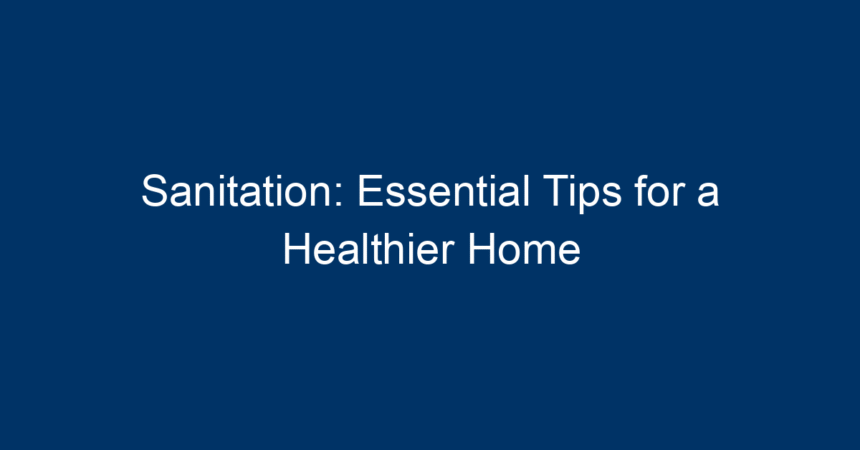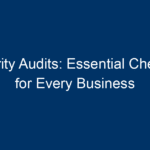Maintaining proper sanitation in your home is crucial for not just the aesthetics, but for your overall well-being. In today’s fast-paced world, where we often overlook the importance of cleanliness, it’s crucial to prioritize sanitation practices. A clean home fosters a healthier environment, reducing the risk of illness and enhancing comfort. In this article, we will provide essential tips for effective sanitation in your home, ensuring you create a safe haven for you and your family.
Understanding Sanitation
Sanitation refers to the measures taken to maintain health and hygiene within living environments. It involves waste management, cleanliness, and the prevention of disease. Poor sanitation can lead to various health issues, from allergies to serious infections. In contrast, proper sanitation practices significantly contribute to physical and mental well-being.
The Importance of Sanitation in Homes
-
Health Benefits: A clean home reduces the risk of infections and allergies by minimizing dust, germs, and allergens.
-
Increased Comfort: A clean living environment boosts your mood and enhances your overall comfort.
-
Longer Lifespan of Belongings: Regular sanitation helps maintain the quality of your home and furniture, prolonging their lifespan.
- Better Productivity: A tidy space leads to increased focus and productivity, particularly for those working from home.
Essential Sanitation Tips for Different Areas of Your Home
1. Kitchen Sanitation
The kitchen is often the heart of the home but can also be a breeding ground for bacteria if not properly sanitized.
a. Regular Cleaning
- Wipe Down Surfaces: After each meal preparation, wipe down countertops and tables with an antibacterial cleaning solution.
- Sanitize Sponges and Dishcloths: Soak them in a vinegar solution or microwave them for a quick sanitation boost.
b. Proper Food Storage
- Maintain Refrigerator Hygiene: Regularly check and clean spills. Keep raw meats separate from other foods to prevent cross-contamination.
- Use Clear Containers: Label containers with contents and dates to avoid spoiled food.
2. Bathroom Sanitation
Bathrooms are another critical area that requires meticulous sanitation.
a. Daily Cleaning Routines
- Toilet Cleaning: Use a toilet bowl cleaner weekly and a disinfectant for the seat and handles daily.
- Shower and Sink Maintenance: Wipe down tiles and faucets with a mildew-resistant cleaner.
b. Air Quality Control
- Ventilation: Ensure your bathroom is well-ventilated to prevent mold and mildew. Consider using exhaust fans.
- Air Fresheners: Use natural air fresheners such as essential oils or baking soda to maintain a pleasant environment.
3. Living Room and Bedrooms Sanitation
The areas where you and your family relax need special attention for sanitation.
a. Dust and Vacuum Regularly
- Dust Surfaces: Use microfiber cloths to trap dust on furniture, shelves, and electronics.
- Vacuuming: Regular vacuuming helps remove dust, pet hair, and allergens from carpets and upholstery.
b. Maintain Textiles
- Wash Bedding: Wash sheets, pillowcases, and blankets weekly in hot water to eliminate dust mites and allergens.
- Cushion Care: Wash or vacuum cushion covers regularly.
4. Outdoor Sanitation
While focusing on indoor areas is vital, don’t forget your outdoor spaces.
a. Yard Maintenance
- Trash Disposal: Dispose of litter properly and have adequate trash bins to prevent pests.
- Regular Landscaping: Trim bushes and mow your lawn to keep your outdoor space pleasant and hygienic.
b. Clean Outdoor Furniture
- Regular Wipes: Use soap and water or a gentle cleaner to wipe down outdoor furniture.
- Store Properly: When not in use, store furniture to protect from adverse weather conditions and pests.
Advanced Sanitation Techniques
1. Implementing a Routine
Establish a cleaning schedule that divides tasks into daily, weekly, and monthly routines. This system can help prevent chores from being overwhelming.
2. Eco-Friendly Products
Utilizing eco-friendly cleaning supplies can enhance sanitation while being mindful of the environment. Look for biodegradable products that reduce your carbon footprint.
3. Professional Cleaning Services
Consider hiring professional cleaning services periodically for deep cleaning. They can help manage difficult spots that are often neglected.
Common Sanitation Mistakes to Avoid
- Neglecting High-Touch Surfaces: Regularly sanitize doorknobs, light switches, and remote controls.
- Using the Same Cloth Everywhere: Designate different cleaning cloths for different areas to avoid cross-contamination.
- Ignoring Air Quality: Regularly change air filters and consider an air purifier to enhance indoor air quality.
Actionable Insights for Better Sanitation
To establish a cleaner and healthier home, start incorporating these actionable tips:
- Create a Cleaning Schedule: Develop a daily, weekly, and monthly checklist to stay organized and ensure no area is neglected.
- Engage the Whole Family: Assign tasks to family members to encourage collaboration in maintaining sanitation.
- Invest in Quality Cleaning Supplies: Purchase effective cleaners and tools that make sanitation easier.
- Educate Family Members: Teach your family about the importance of sanitation so that everyone values cleanliness.
Conclusion
Sanitation is not merely about keeping your home looking good; it plays a vital role in promoting health and well-being. By implementing the tips and practices discussed in this article, you can create a safer, cleaner environment for yourself and your loved ones. Remember, effective sanitation is a habit developed over time, so be patient and consistent as you work towards a healthier home. Prioritize sanitation, and watch how it transforms your living space into a sanctuary of cleanliness and comfort.
By adopting these essential sanitation tips, you can significantly enhance your home environment, leading to improved health and happiness. Start today, and make sanitation a cornerstone of your daily routine!




